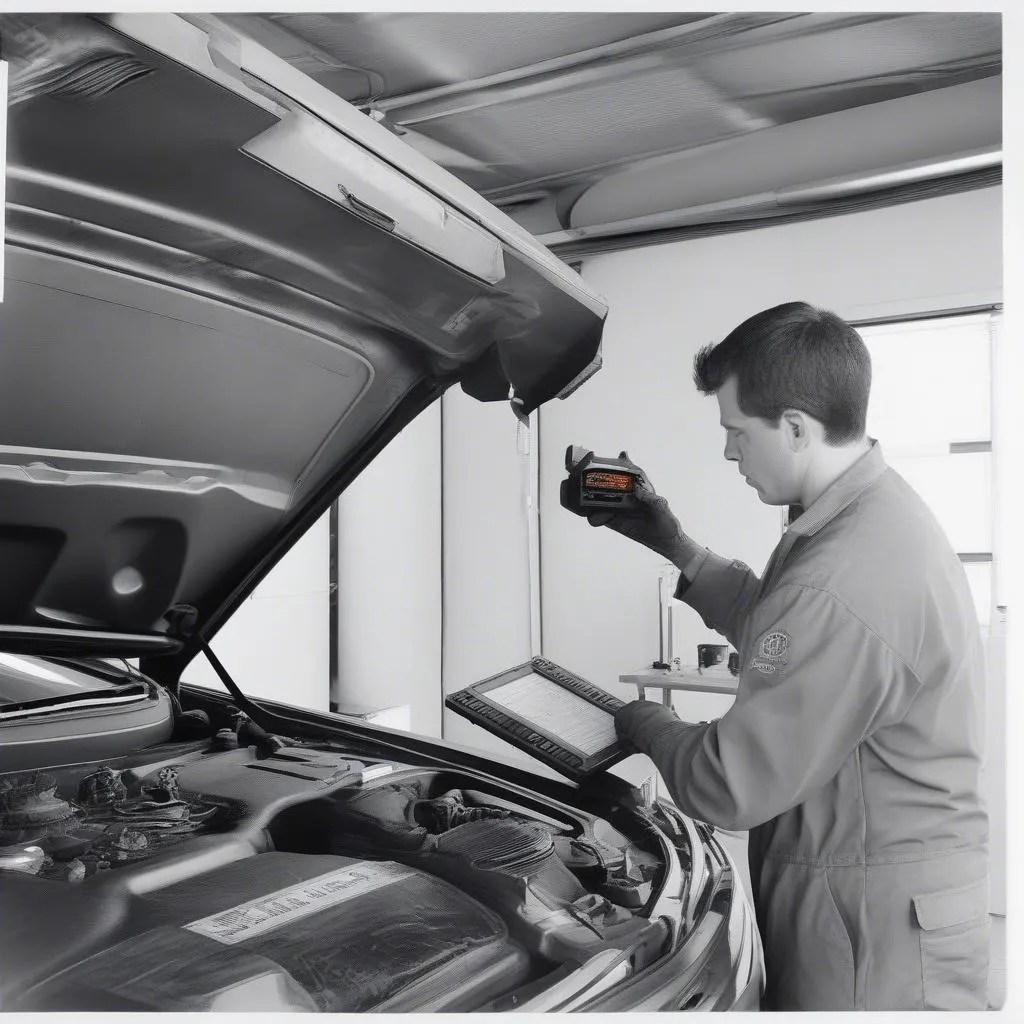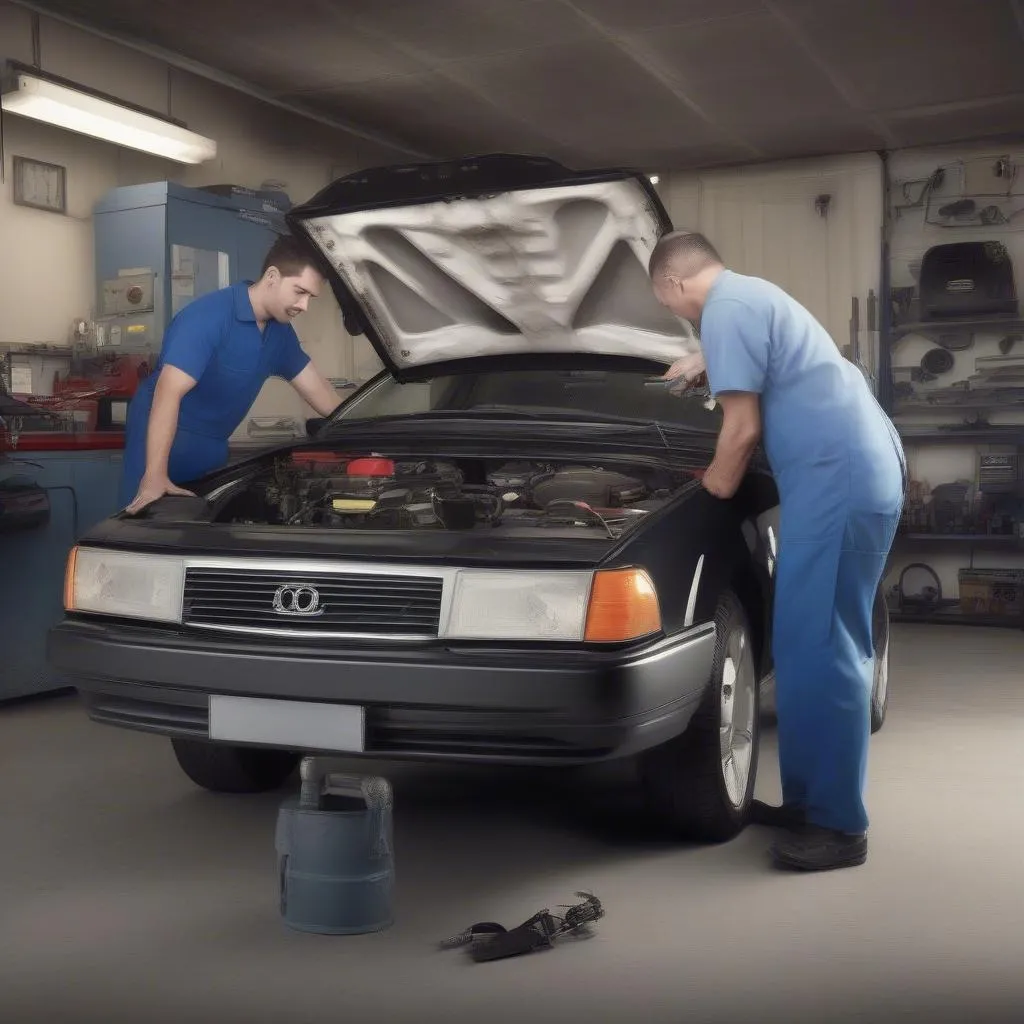Imagine you’re driving down a highway, enjoying the open road, when suddenly your car’s check engine light flashes on. You pull over, check your gas cap, and everything seems fine. You start the car, and the light goes out… for now. But later, it reappears. This could be the dreaded P0456 code, a signal from your car’s onboard diagnostics system (OBD II) that there might be an issue with your car’s evaporative emissions system.
What Does OBD II Code P0456 Mean?
For mechanics: The P0456 code signals a “Small EVAP Leak Detected (Fuel Tank Pressure Sensor)”. This means the system detects a leak in your car’s evaporative emissions system, a critical part responsible for controlling the amount of fuel vapor released into the atmosphere.
For car owners: In simpler terms, this means your car’s computer senses a leak in the fuel tank’s vapor control system. Imagine a leaky bucket – instead of water, it’s fuel vapor. The P0456 code is like your car’s way of telling you that a leak is causing these vapors to escape into the environment.
What Causes the P0456 Code?
Several factors can trigger the P0456 code. Here’s a common scenario:
-
Loose Gas Cap: Imagine a gas cap that doesn’t seal properly. That’s like a hole in your leaky bucket. Fuel vapors escape, triggering the P0456 code.
-
Cracked Fuel Tank: Think of a cracked fuel tank like a large hole in your bucket. This is a more serious issue, as it allows fuel vapor to escape continuously.
-
Damaged EVAP System Components: The EVAP system is like a network of pipes and valves. A damaged part, like a cracked hose or a faulty valve, could disrupt the flow of fuel vapors, causing a leak.
-
Clogged EVAP System: Think of a clogged filter in your bucket. This can cause pressure to build up in the fuel tank, leading to a leak in another part of the system.
How to Fix the P0456 Code
1. Start with the Simple:
- Tighten the Gas Cap: As simple as it sounds, a loose gas cap is the most common culprit for the P0456 code.
- Inspect the Fuel Tank: Look for any visible cracks or damage to your fuel tank.
2. Check the EVAP System:
- Inspect for Leaks: Carefully inspect all hoses, lines, and connections in the EVAP system for signs of leaks, cracks, or damage.
- Check Valves: Ensure all EVAP valves are working properly.
- Purge Valve: This valve controls the flow of fuel vapor into the engine for combustion. Test the purge valve to ensure it opens and closes correctly.
3. Use a Scanner:
- OBD II Scanner: A scanner can help you identify specific EVAP system components that might be malfunctioning.
- Dealer Scanner for European Cars: This advanced scanner can diagnose deeper issues within the EVAP system for European car models, including Fords.
 Evaporative Emissions System Scanner
Evaporative Emissions System Scanner
4. Additional Tips:
-
Professional Diagnosis: If you’re not comfortable inspecting the EVAP system yourself, consult a qualified mechanic. They can diagnose the issue and provide a solution.
-
Replacement Parts: If you find a damaged part, replace it with a genuine Ford part or an OEM equivalent.
-
Cleaning: If a component is clogged, clean it or replace it to ensure proper function.
Frequently Asked Questions
Q: How serious is the P0456 code?
It’s important to address this code, as it can lead to decreased fuel efficiency and even damage to your car’s engine. While it’s not always a major problem, it’s best to address it promptly.
Q: Can I drive my car with the P0456 code?
You can likely drive your car with this code for a short period, but it’s not recommended. The check engine light serves as a warning, and ignoring it could worsen the problem.
Q: Can I fix the P0456 code myself?
While many of the causes are easy to check and fix, diagnosing the EVAP system requires specialized knowledge and tools.
Related Articles
- OBD Code P0440: What it Means and How to Fix It
- OBD Code P0442: What it Means and How to Fix It
- OBD Code P0446: What it Means and How to Fix It
Need Expert Help?
Contact us via Whatsapp: +84767531508 for expert assistance with diagnostics tools and professional car repair guidance. Our team of experienced mechanics is available 24/7 to support your automotive needs.  Mechanic Providing Car Repair Guidance
Mechanic Providing Car Repair Guidance
Conclusion
The P0456 code can be a nuisance, but it doesn’t have to be a major headache. By understanding the causes and taking steps to resolve the issue, you can restore your Ford’s fuel efficiency and ensure it’s running smoothly. Remember, a well-maintained EVAP system contributes to a cleaner environment and a healthier engine for your car. Don’t hesitate to reach out for expert assistance if needed. Let’s keep those fuel vapors in check and keep your Ford running its best!